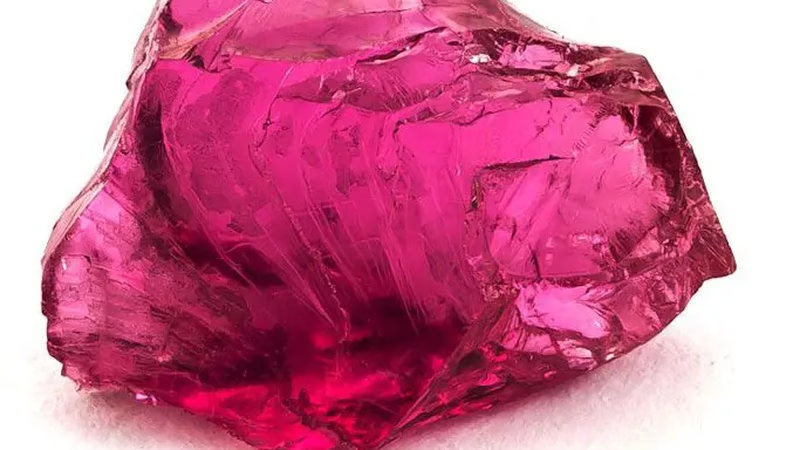
Vibrant spinel gemstones showcase beauty in jewelry design.
Spinel is a gemstone that is often used in jewelry and It is a hard, durable mineral that is valued for its vibrant colors and brilliance. Spinel is typically found in a range of colors, including red, pink, blue, violet, orange, and black. It is often mistaken for other gemstones, such as ruby or sapphire, due to its similar appearance. Historically, spinel has been highly regarded and was often mistaken for other precious gemstones. For example, some famous gemstones in royal collections, such as the "Black Prince's Ruby" in the British Crown Jewels, are actually spinels. Today, spinel is recognized and appreciated as a gemstone in its own right.
Spinel gemstone includes a wide range of colors and designs available, and the abundance of spinel in the market has made it one of the most affordable and luxurious gemstones on the market. The use of spinel in jewelry has a long history. Even in the past, people in west of Asia thought that the powerful spell of spinel makes a person who wears spinel clothes stay away from darkness and evil. Spinel is a relatively hard gemstone that is recommended for use in jewelry making; because it is more durable due to its high resistance to environmental factors. Today, spinel is found in many parts of the world, but depending on the location of each region, the spinel obtained from that region has different appearance and physical properties. Different spinel gemstones have different brand and scientific names, and this difference is due to the variety of colors and types of spinels in middle east and world.
- Cinnamon spinel
This pumice stone is usually pinkish brown in color. This type of spinel is mostly found in California, Sri Lanka, South of Asia, Brazil and the United States. - Green spinel with Tsavorite brand
This spinel has light green to dark shades and is sometimes confused with emerald. This type of stone is found in Tanzania, Kenya and Africa. If a combination of this stone with emerald is used in jewelry making; due to its great resemblance to emerald, it seems a little difficult to distinguish. - Espartite brand spinel
This type of spinel is found in orange and has a range of bright yellow, orange and bright reddish orange colors, but each color spectrum has a different price compared to other colors. Spasitis is still found in many parts of the world, including the United States. - Demento brand
This type of stone is one of the very rich and vibrant types of green spinel and is found in the Ural Mountains of Russia. - Demantoid spinel
This type of spinel is very rare and has unique physical properties and is known as a very expensive piece of jewelry. - Rhodolite brand spinel
This type of spinel is very similar to the rose and has a pink and reddish color that is found in North Carolina and the United States. The beautiful color of this type of spinel stone has made it a very suitable stone for use in jewelry. - Masai Blue Spinel
This type of blue spinel was recently discovered in 1990 in Tanzania.
Its blue color and also the lack of this type of stone in the market, has made it a very valuable and precious pumice stone. Recently, however, specimens of this type of pumice have been found in the United States, Russia, Kenya, and Turkey, and these discoveries have reduced the price of this type of stone slightly. Some types of this spinel have the property of changing color and can be seen as purple due to the light of the lamp. After selecting the desired color and type of spinel, by creating very beautiful cuts in them, very beautiful shapes of them can be used in jewelry making.
Spinel is known for its excellent transparency and high refractive index, which contributes to its brilliance and sparkle. It is a popular choice for various types of jewelry, including rings, earrings, necklaces, and bracelets. Spinel can be faceted into different shapes, such as round, oval, cushion, or emerald cuts, to showcase its beauty and maximize its brilliance. In terms of durability, spinel has a hardness of 8 on the Mohs scale, which makes it a suitable gemstone for everyday wear. It is relatively resistant to scratches and abrasions, but like any gemstone, it still requires proper care and maintenance to preserve its beauty over time.
-
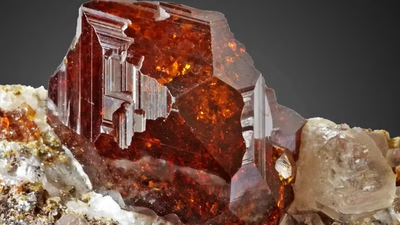
Spinel and ruby share similar red hues but differ in several key characteristics. Rubies typically exhibit a deeper red color with blue undertones, while spinels can range from orangey-red to pinkish-red. The refractive index (RI) is a crucial factor in distinguishing these gemstones, with rubies having a higher RI. Under UV light, rubies show strong fluorescence, whereas spinels display minimal fluorescence. Accurate identification is essential for gem dealers to provide transparency and ensure fair pricing based on quality and rarity. Historically, the two stones were often confused until the late 18th century when they were classified separately. Chemically, rubies are aluminum oxide corundum, while spinels are magnesium aluminum oxide. Rubies are rarer and more valuable than spinels due to their historical significance and market demand.
The quality of rubies can significantly influence their price, making them one of the most sought-after gemstones. Spinel has gained popularity recently but still holds a lower market value compared to ruby. Both gemstones may contain inclusions; however, rubies often have needle-like inclusions known as rutile silk, while spinels may show octahedral crystal inclusions. In terms of hardness, rubies rank 9 on the Mohs scale compared to spinel"s ranking of 8. "
-
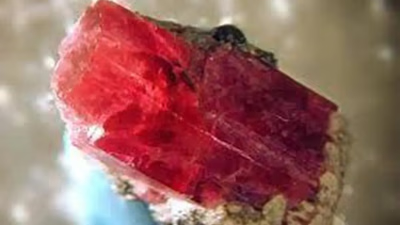
Identifying artificial spinel gemstones involves several methods that highlight their differences from natural counterparts. Visual examination is crucial; look for unusual colors or synthetic growth patterns using a jeweler"s loupe or microscope. The refractive index (RI) is another key indicator, with natural spinel typically ranging from 1. 712 to 1. 736, while synthetic varieties may have a slightly higher RI. Advanced testing techniques, such as spectroscopy and X-ray diffraction, can provide definitive identification of synthetic spinel. Fluorescence tests reveal that natural spinels show weak fluorescence under UV light, whereas synthetic versions often exhibit strong fluorescence in various colors. Additionally, examining the gemstone under a microscope can reveal unique patterns and inclusions indicative of artificial production methods.
Natural spinels react poorly to magnets due to their iron content, while synthetic samples do not react at all. Price can also be a telltale sign; synthetic spinels are generally cheaper than natural ones and often appear glassy in texture. To ensure authenticity, purchasing gemstones with valid gem certificates is recommended. "
-
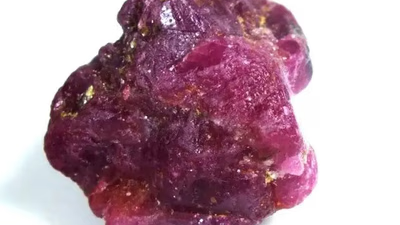
Spinel prices are influenced by supply and demand dynamics, quality, and market conditions. Limited availability or high demand for specific colors can drive prices up, while excess supply may lead to price drops. The quality of spinel, including color, clarity, size, and cut, plays a crucial role in determining its value. Rare colors and exceptional qualities from renowned sources like Myanmar can command premium prices. Economic factors, geopolitical situations, and global trends also impact market stability and consumer confidence. For instance, fine-quality spinels can range from $200 to $500 per carat for smaller sizes, while larger specimens with rare colors may reach up to $10,000 per carat. The treatment status of spinel affects its desirability; untreated stones are generally more valuable than treated ones. Fashion trends and celebrity endorsements can further influence demand and pricing.
The spinel sales market varies regionally across different segments such as high-end jewelry or wholesale markets. To navigate this complex landscape effectively, consulting industry publications and reputable dealers is essential for accurate pricing assessments.
-

Spinel is a durable gemstone known for its vibrant colors, including red, pink, blue, and black. Often confused with rubies and sapphires, spinel has historical significance, with notable pieces like the "Black Prince"s Ruby" actually being spinels. Its affordability and luxurious appeal make it a popular choice in jewelry. Spinel"s hardness of 8 on the Mohs scale ensures it is suitable for everyday wear, while its excellent transparency enhances its brilliance. Various types of spinel exist, each with unique properties based on their geographic origin. For instance, cinnamon spinel is found in California and Sri Lanka, while green spinel can be confused with emeralds due to their similarities. The market offers a wide range of spinel gemstones that can be cut into various shapes for jewelry making. Spinel"s rich history and diverse color palette contribute to its growing popularity among jewelers and consumers alike. "
-
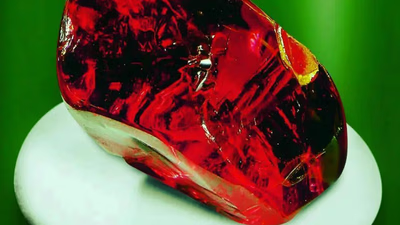
Spinel is believed to influence both the body and mind, primarily through metaphysical practices rather than scientific validation. Advocates claim that spinel can enhance physical vitality, support recovery, and boost energy levels. It is also thought to aid in emotional healing by helping individuals release past traumas and negative emotions. Specific benefits attributed to black spinel include promoting clarity of mind, reducing headaches, and enhancing sexual power. Additionally, it is said to improve heart health and prevent various diseases. On a mental level, spinel is associated with clarity, focus, and creativity, helping users overcome confusion and enhance problem-solving skills. Different colors of spinel are believed to have unique effects; for example, red spinel may increase passion while blue spinel promotes calmness. Furthermore, spinel is regarded as a protective stone that shields against negativity and fosters emotional balance.
While many people find personal value in these beliefs about spinel"s properties, it is crucial to remember that they should not replace professional medical advice or treatment. "
-
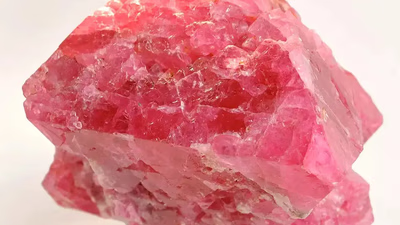
Myanmar, Sri Lanka, Thailand, and Tajikistan are key players in the global spinel market. The Mogok region in Myanmar is particularly famous for high-quality spinel, including the renowned "Mogok Ruby. " Sri Lanka"s Ratnapura district is another significant source, known for its diverse color range. Thailand"s Bo Rai and Chanthaburi regions contribute to the gemstone trade as well. Spinel mining has also gained traction in Vietnam since the 1990s, especially around Luc Yen. Tanzania is notable for its vibrant red-pink spinels found in Morogoro County and Tunduru region. The Badakhshan Spinel mine in Tajikistan holds historical significance and produces both red and pink spinels. The availability of spinel can fluctuate due to new discoveries or depletion of existing deposits, making it essential to consult current sources for accurate information on mining operations.
Countries like Afghanistan, Nepal, Australia, and Madagascar also have notable spinel deposits. Overall, the global landscape of spinel mining is dynamic and influenced by various regional factors.






